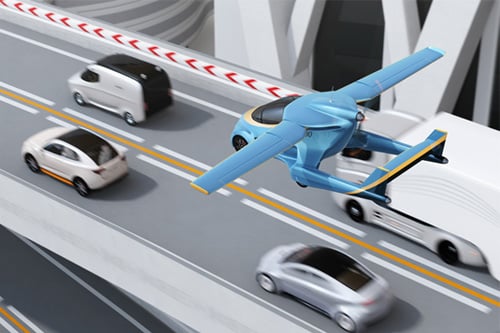VTOLs have to contend with Canadian cities’ preference for expanding liveable space upward

Flying cars might begin soaring cities’ skyscapes as early as 2023, but it remains to be seen if these vehicles will have a role in shaping the future of urban planning, especially in upward-building markets like Toronto and Vancouver.
With at least a dozen firms actively engaged in research, prototyping, and testing of vertical take-off and landing vehicles (VTOLs), the technology is seen by many as a promising way of conveyance across urban congestion on a more efficient and far faster pace than existing transport systems.
As opposed to the high level of noise associated with helicopters and military versions of the craft, civilian VTOLs – which borrow more from drones in terms of design – are quieter, less expensive, and more environmentally-friendly.
“Instead of this deep, guttural, penetrating-through-walls sound, you have a much more acceptable sound, similar to a ceiling fan,” according to Nikhil Goel, head of product at Uber Elevate.
“The vehicles are real. They’re coming. I think it's going to be faster than anybody thinks is possible,” Goel told The Canadian Press.
Read more: Further vertical expansion will help increase liveable space
Uber has revealed plans of ferrying passengers in 5-seat hybrid-powered VTOLs in Los Angeles, Dallas-Fort Worth, and a non-U.S. metropolitan area by 2023.
Goel predicted that passenger VTOLs will be extremely effective in a crucial niche: low-cost hub-to-hub travel connecting major airports and downtown landing areas, or what he called “vertiports”.
“We are not building this product for the elite,” Goel assured, noting that economies of scale will bring down the cost of VTOL trips to levels conducive to widespread use.
A study by Porsche Consulting forecast that the global air taxi market will be worth $32 billion by 2035, with the total number of vehicles reaching 15,000 by then. Aerial delivery and inspection services are also expected to represent a further $42 billion.
However, existing regulations are significant roadblocks to this apparent panacea. With land area being an irreplaceable resource in Canada’s hottest cities, the drive in recent decades has been to build liveable spaces upward rather than outward – which might prove anathema to sketching out effective routes for air taxis.



